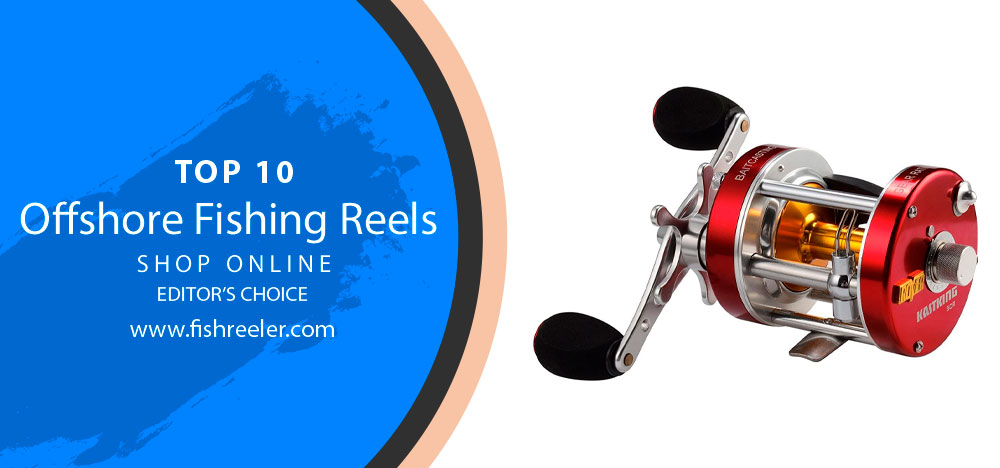
🎣 Why Choose an Offshore Fishing Reel? 🌊
If you’re looking to elevate your angling game, especially in the challenging offshore environment, there’s no tool more critical than the right fishing reel. 🌟
Top Reasons to Opt for an Offshore Fishing Reel:
✅ Power Play: These reels are designed to tackle the big game. Think marlins, tunas, and those elusive deep-sea monsters. 💪
✅ Endurance Champion: With materials resistant to saltwater corrosion, offshore reels last longer and stand up to the elements. 🌧️🌊
✅ Smooth Operator: Experience fewer snags and smoother line retrieval, ensuring that once you hook your catch, it stays hooked. 🔄
✅ Precision Matters: Offshore reels offer greater control and accuracy, making every cast count. 🎯
🔶 Compared to standard fishing reels, the offshore variant stands out not just in its design, but also in its performance. So, whether you’re a seasoned angler or someone looking to delve into the thrill of deep-sea fishing, investing in an offshore fishing reel is your ticket to a rewarding experience. 🏆🐠
🌊 Offshore Fishing: Nature’s Grand Stage 🎣
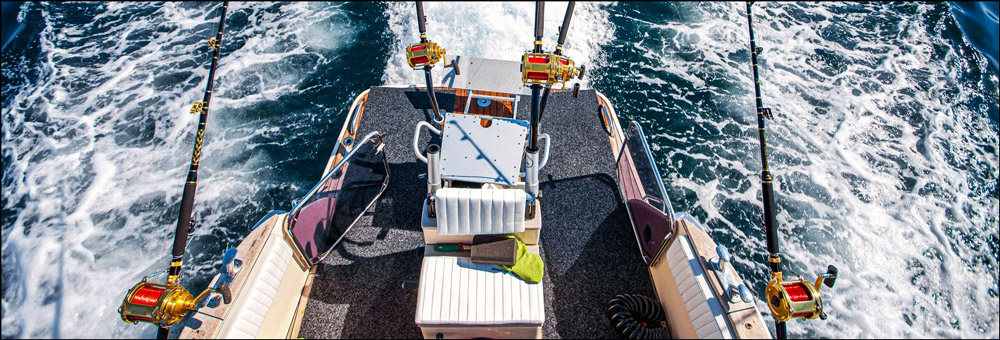
Offshore fishing is not just about the thrill of the catch; it’s about embracing nature’s most majestic and uncharted territory. Every wave that brushes against the hull, every gust of wind that fills the air with salt, paints a picture of adventure and mystery. 🌅
Beyond just the visual spectacle, offshore fishing promises encounters with the titans of the deep. From the majestic marlin’s acrobatic displays to the heart-racing chase of a school of tuna, the ocean offers challenges and rewards in equal measure. It’s a dance of patience, strategy, and adrenaline. 🐟🌊
The right rod can make casting effortless, the ideal bait can tempt the most elusive fish, but it’s the reel that truly stands as the backbone of the entire operation. A high-quality offshore reel ensures that once you hook a fish, you have the control and power to bring it aboard. 🛠️
The Heartbeat of Deep-Sea Adventures: Decoding the Offshore Reel 🌊
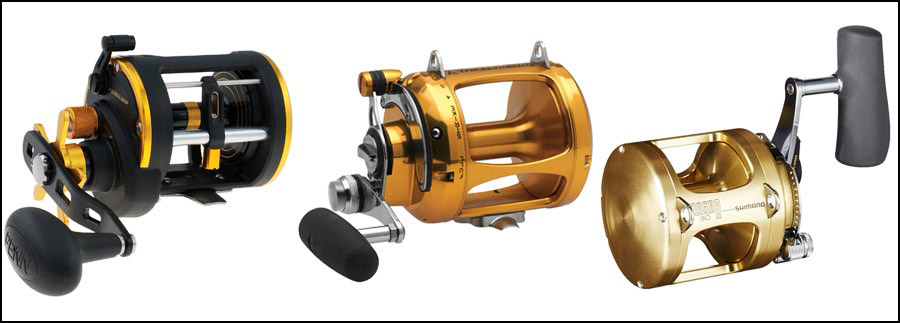
From Ancient Origins to Modern Marvels
The story of the offshore reel starts here. From rudimentary spools made of wood and bone in ancient times to the precision-engineered marvels of today, the offshore reel has seen a transformation as vast as the oceans it seeks to dominate. 📜⚙️
Initially, the need was simple: a device to store long lengths of line that could reach the ocean’s depths. However, as fishing techniques evolved and targets became more formidable, so did the reel. The 20th century saw a boom in reel technology, introducing features like advanced drag systems and high-capacity spools, all tailored for the unique challenges of offshore angling.
The Intricate Mechanics: Offshore vs. Regular Reels
At first glance, an offshore reel might look akin to its freshwater cousin. But beneath the surface, there’s a world of difference, much like the tranquil waters of a lake compared to the unpredictable currents of the sea. Here’s how they stand apart:
☑️ Material & Build: Offshore reels boast materials designed to combat the corrosive nature of saltwater, ensuring longevity and consistent performance. 🛡️
☑️ Drag System: The fish in deep waters are formidable opponents. Offshore reels are equipped with robust and smooth drag systems, ensuring anglers can battle these behemoths without causing harm to the fish or the gear. 💪🐠
☑️ Line Capacity: Given the depth and the propensity for fish to make long runs, offshore reels come with larger spools to accommodate more line, ensuring you’re never caught short. 🧵🔄
☑️ Gear Mechanisms: Faster retrieval and increased torque are pivotal in offshore scenarios. The internal gearing of offshore reels is specifically designed to provide this advantage. ⚙️🎣
🔶 In essence, while all reels serve the primary function of holding and retrieving line, the offshore reel is a specialized tool, fine-tuned for a distinct environment. It embodies the spirit of the deep sea: powerful, resilient, and endlessly fascinating. 🌊🏆
From Conventional to Spinning: Different Types of Offshore Reels
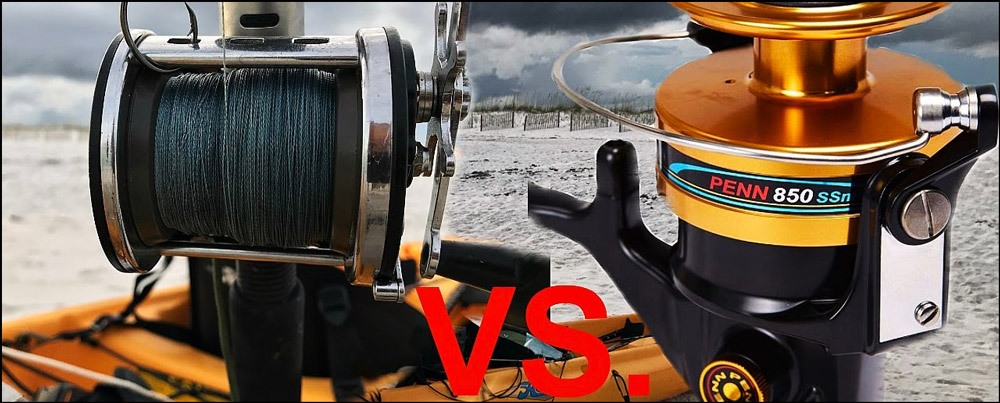
Offshore fishing reels are designed for fishing in deep water, and there are three main types of offshore fishing reels: conventional reels, spinning reels, and baitcasting reels. Each type has its own unique features, benefits, and drawbacks.
Conventional Reels: Conventional reels, also known as baitcasting reels, are the oldest type of fishing reels and are widely used in offshore fishing. They have a spool that rotates as the angler turns the handle, allowing for greater control over the fishing line. Conventional reels have a high gear ratio, which means they can retrieve lines quickly. They also have a powerful drag system that allows anglers to reel in large fish without breaking the line.
Spinning Reels: Spinning reels, also known as fixed-spool reels, are the most commonly used type of fishing reel in offshore fishing. They have a fixed spool that does not rotate, and the fishing line is wound onto the spool by a rotor that turns as the handle is cranked. Spinning reels have a lower gear ratio than conventional reels, but they are easier to use and are suitable for all levels of anglers.
Baitcasting Reels: Baitcasting reels are similar to conventional reels in that they have a rotating spool, but they are designed for casting light lures and baits accurately. They have a low gear ratio and are used with heavier fishing lines. Baitcasting reels require some skill to use effectively, but they offer greater accuracy and control when casting.
🔶 Conventional reels are best suited for catching large fish, but they are more difficult to learn and use than spinning reels and baitcasting reels. Spinning reels are the easiest to use and are suitable for all levels of anglers. They are less powerful than conventional reels but are less expensive and more versatile. Baitcasting reels offer greater accuracy and control when casting light lures and baits, but they require some skill to use effectively.
Finding the Right Offshore Fishing Reel for Your Target Species
Offshore fishing reels are specialized fishing reels designed to handle the unique challenges and demands of deep-sea fishing. Unlike regular fishing reels that are used for freshwater or inshore fishing, offshore fishing reels are built to withstand the harsh conditions of the open ocean, where fish like marlin, tuna, and swordfish can grow to massive sizes and put up a fierce fight.
When choosing an offshore fishing reel, there are several factors to consider, such as the size and strength of the fish you’re targeting, your level of experience, and the type of fishing you’ll be doing. Look for reels with a high line capacity, a strong and smooth drag system, and a durable construction that can withstand the corrosive effects of saltwater. Additionally, consider the weight and size of the reel, as a heavier reel can be more tiring to use over long periods.
1# Penn SQL30LW Squall LevelWind
Our list being opened by Penn SQL30LW Squall LevelWind fishing reel, which we considered the best among the presented. This model has been repeatedly tested by experienced anglers around the world and has excellent reviews on Amazon and other shops. We think that this offshore reel deserves to be a leader on the list for many reasons.
Key Features of the Penn SQL30LW Reel:
- The graphite frame and side plates make the reel quite light whereas most offshore reels are made from heavier aluminum.
- Taking this reel in hand, you will immediately feel that it is perfectly balanced – this is thanks to two stainless steel ball bearings that balance the reel on both sides. Anti-reversing bearing will ensure you a very smooth operation when releasing the line.
- The reel will be indispensable for both right-handers and left-handers because the company supplies all reels except the largest and smallest with a configuration for both hands.
- LevelWind has a bright and simple design. It copes well with fish up to 50 pounds and has a large amount of filling line, so you can not worry about the fish break at the most unnecessary moment.
- Internal stainless steel components prevent corrosion, and the graphite body makes it light, but it is not the cheapest reel on the market, so some users may not be able to fit it. In this case, we have a solution for you – it is lower on the list.
2# Shimano TLD 2-Speed Conventional Reel
Shimano company has been a long time on the market and managed to earn the trust of many users. The presented reel is one of the highest quality in the Shimano TLD family. In this family, there are two-speed and one-speed models of Shimano Reel. The two speeds feature a more powerful drag and drop system, the ability to withstand a heavier line, and a low gear ratio. According to a 2018 survey, 87 out of 100 fishermen preferred the two-speed models to one-speed ones.
Key features of the Shimano TLD II Reel:
- Graphite is the main component from which the reel is made. It is a lighter and cheaper material than aluminum, so it can often be found in many budget reels. But the water he is opposed to no worse than stainless steel.
- The reel is equipped with 4 stainless steel anti-corrosion bearings, which put pressure on titanium washers. The choice of these materials allows you to put pressure on the entire area of the washers.
- Under the handle there is a lever with which you can control the drag system – you can tighten it completely or give the fish some space. It depends on your preferences. Two-speed TLD reels move up in drag with a max range of 30-42 pounds. Strike drag ranges from 22 to 32 pounds.
- By choosing a two-speed model of Shimano LTD, you can pull out fish up to 50 pounds, while having a smooth drag and a large line.
3# Penn Battle II Spinning Fishing Reel
You could already see this fishing reel in our reviews. Penn Battle II is suitable for spinning or baitcasting fishing, but it will be indispensable offshore too. It costs a little more than the Penn SQL30LW Squall LevelWind, but we found a variant for you at the same price. So, get it while it’s hot.
Key features of the Penn Battle II Reel:
- Penn Battle II is slightly heavier than a conventional reel, as it has an all-metal body, a rotor, and side plates. But this feature will not allow him to bend under the pressure of large fish.
- Like many Penn reels, HT-100 carbon fiber washers are used here that extend the life of the reel and ensure smooth operation. The keyed washer uses both sides of the washer to provide smooth braking.
- Thanks to the one-way bearing in the design in the reel, instantaneous anti-reverse is achieved and the backlash on the rotor is eliminated.
- In the previous version (Penn Battle I), many customers complained about the rapid erasure of paint and body corrosion. In Penn Battle II this defect is fixed and the manufacturer made 5 stainless steel bearings.
- One of the most useful features of a reel is the ability to add capacity rings. So you will always know how many lines you have. In addition, you have the rubber inlay on the spool. It means that you can load the spool directly with a braided line and skip having to back it with mono.
4# Sougayilang Line Counter Reel
Sougayilang company produces its reel in China and has a great demand not only in its own market but also in Europe and American. These are cheap but high-quality reels and we have heard very few negative reviews about them. The Sougayilang Line Counter Reel is no exception.
Key features of the Sougayilang Line Counter Reel:
- A striking reel design immediately catches the eye, but the blue coloring is not the only one. You can choose an orange or blue color and it doesn’t matter whether you are left-handed or right-handed. Sougayilang has both options.
- Behind a pleasant appearance, there are no less pleasant characteristics of the reel. It is equipped with a double ratchet, so the rotation will not start until you want. Stop the line will be a piece of cake, and you can fully control the use of the reel.
- Aluminum spool and stainless steel gears protect against corrosion. And carbon fiber drag system will ensure smooth operation. Regardless of how intensively you use a reel, you can be sure that it will perfectly serve for many years. The manufacturer gives a three-year warranty on it, which many, even the most popular reels, do not have.
5# KastKing Rover Round Baitcasting Reel
We put this reel in second place because it is not inferior in performance Penn SQL30LW Squall LevelWind, but it is two times cheaper. (About $50 on Amazon). The reel is universal and can work both in salty and freshwater. Despite its extreme lightness, you will not feel the tension in your hand and will struggle with the largest fish easily and smoothly. KastKing reel is worth every cent.
Key features of the KastKing Rover Reel:
- Versatile and durable design allows the reel to be used in fresh and saltwater. Corrosion and rust will not overtake the reel due to the aluminum anodized spool and side plates. The stainless steel shaft and worm gear prove it.
- You can use the reel both for trolling because of its lightness and for catching large sea fish because of the power of the reel.
- Several ball bearings in combination with anti-reversing ensure the most smooth operation. A drag system of up to 20 pounds allows you to pull out almost any sea or fresh fish.
6# Avet 5.3:1 Lever Drag Conventional Reel
Avet MXJ MC RAPTOR is ideal for those who want to effectively invest a little more money and get one of the highest quality reels on the market. Avet is not as popular as Shimano or Penn, but any professional fisherman will tell you that the company produces the best reels in the United States. These reels are developed in the USA, they are perfectly balanced, have a small weight, but maximum efficiency. If you want to invest your money in a great offshore reel, then you should pay attention to this option.
Key features of the Avet Lever Drag Reel:
- The reel has two colors – blue or more popular camouflage. The all-metal frame is made of corrosion-resistant aluminum. But this does not prevent the reel from being light and compact.
- The internal components of the reel are made of stainless steel 60 T, which is used in marine vessels. 8 sealed ball bearings ensure a very smooth operation. Avet MXJ is equipped with a patented silent anti-reversing system, which is the most reliable in the world. Therefore, you can don’t worry that you’ll lose the line.
- The leg for attaching the rod will allow you to attach the reel to almost any rod, so you do not need to walk and pick up the fishing pole to the reel. The reel can withstand a drag up to 22 pounds, so any marine fish will be afraid of you.
7# Okuma Cold Water Linecounter Trolling Reel
Yes, in this reel every detail is made very high-quality and carefully. So that, the reel works most efficiently in your hands. Many users appreciate this reel, because for the price of less than $100 you get a lot of useful features.
Key features of the Okuma CW-453D Reel:
- The manufacturer tried to maximally facilitate the design of the reel so that you could sit for a few hours near the water and fish without feeling tired in your hands.
- Each component in the reel has durability, even gears, and a drag system. The reel body is made of machined aluminum, and the spool is anodized. A nice addition is the Mechanical Stabilizing System, which provides durability.
- DLX models are designed for left-handed fishermen, so you will not be inconvenienced if you are left-handed. The reel has a one-year warranty, so if you have problems, you can replace or repair it at any time.
- The multi-disс carbonate drag system and the self-lubricating transmission system are most qualitatively made here. With them, the struggle even with the largest fish will be smooth and easy.
8# Daiwa SGT20H Seagate Star Drag Reel
This is a more advanced version of the Sealine (X) line from Daiwa. Daiwa Seagate has many more additional useful functions, unlike its predecessor. Daiwa’s Ultimate Tournament Carbon Drag system, helical gears, and a centrifugal spool brake make it much more productive and versatile. Let’s talk about these functions in more detail.
Key features of the Daiwa SGT20H Reel:
- Daiwa Seagate uses 4 CRBB systems – what is it? These are four Corrosion Resistant Ball Bearings with more enhanced anti-corrosion properties than conventional stainless steel bearings. Also in this system, there is one anti-reverse bearing, but we will touch on it later.
- To enhance the anti-reverse system, Daiwa set up a dual anti-reverse system here. This means that the reel uses both the bearing and the dog together. This makes it much faster and more efficient to stop the reverse of the line.
- From the previous old line of reels, Daiwa Seagate took Ultimate Tournament Drag. We think that it’s a good solution because the drag discs here are made of dense carbon fiber and are constantly oiled for smoothness and lack of squeak.
- The centrifugal brake uses blocks that touch and add friction against the spool as it’s cast. The blocking pressure increases the faster the spool spins which controls but also can limit the range of the cast.
- The spool of the reel is anodized, so the aluminum from which it is made becomes incredibly resistant to corrosion, and this is very important when fishing in seawater.
- Additional features include the spool brake control knob and the proximity of all control settings to each other. This allows the angler to tune the reel very quickly.
9# One Bass Fishing Reels Level Wind Conventional Jigging Reel
The first thing that may surprise you is the handle design. It is big and very convenient, and it has many advantages. In general, and reel abilities should not disappoint you. Corrosion protection, 2 speeds, and a three-year warranty will appeal to any fisherman, but this does not end the reel’s features.
Key features of the One Bass Reel:
- All internal components from bearings to gears in One Bass are made of stainless steel and resistant to corrosion in seawater.
- The carbon drag system provides a wide range, smooth operation, and powerful drag, no matter what settings you choose.
- We came to the most interesting thing – the handle design. The ergonomic and stylish handle is designed so that you can fully control the fish and not make a lot of effort. There are options, both on the left and the right hand.
- You can choose two speeds in the reel, depending on whether you need to tighten or loosen the drag.
- You can do not worry about the loss of your funds, because the manufacturer gives a three-year warranty on the reel, and in case of a breakdown (judging by the reviews on Amazon, this happens very rarely) you can completely replace the reel or repair it.
10# Loki Saltwater Freshwater Conventional Fishing Reel
We stumbled upon this reel by chance, just looking at the goods on Amazon. But this is the case when small rain lays great dust. It does not have hundreds of reviews, but they are all positive. It does not have a huge fan base, but every customer is pleased with the purchase of this reel. So why is it so good?
Key features of the Loki Reel:
- First, it is modest but ergonomic design. The reel is not designed to have a bright appearance, but to perform its work efficiently, which it does.
- You can choose a reel for both the right and left hand, and with a convenient round handle, your hands will not strain when working with the reel.
- The pre-set lever drag features allow any fisherman to adjust the drag as subtly as he wishes. Even without adjusting the drag system, it initially works very smoothly and quickly.
- Two bearings are responsible for the anti-reverse here when in most offshore reels they put only one. This provides much greater effectiveness of the entire anti-reverse.
- Ball bearings 9+2, spool, and other components are resistant to corrosion and made of stainless steel, which is used in aircraft manufacturing, so you will not worry about the strength and durability of the construction.
🎣 Decoding Deep-Sea Companion: Essential Features of an Offshore Reel 🌊
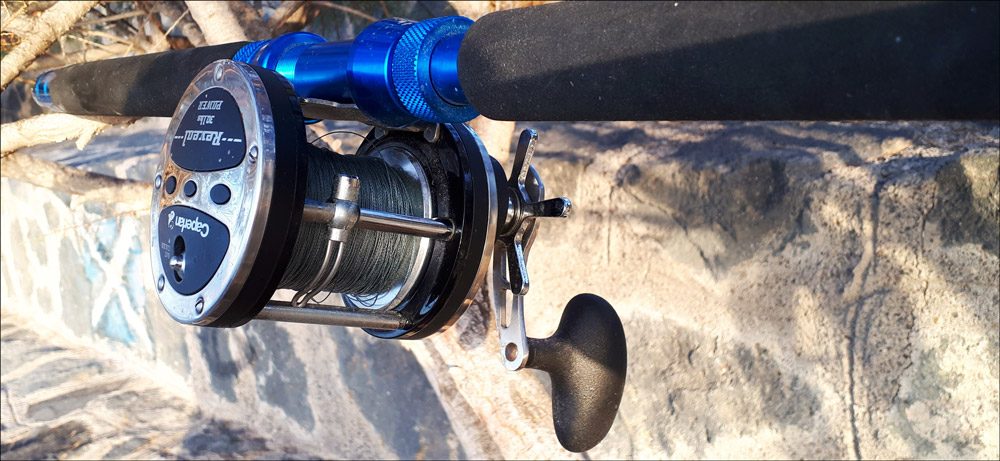
Navigating the myriad options in the world of offshore reels can be a daunting task, especially given the stakes of deep-sea angling. To ensure you’re equipped with the best, it’s vital to understand the key features that distinguish an excellent offshore reel from a merely adequate one. Here’s a deep dive into these pivotal attributes:
Drag System: Taming the Titans of the Deep 🐋💪
The battle between angler and fish is a dance of power, finesse, and endurance. Central to this dance is the drag system. A top-tier offshore reel boasts a drag system that’s both strong and smooth, allowing anglers to apply consistent pressure on powerful fish, while also ensuring the reel doesn’t get overwhelmed.
Why it’s Crucial: Big game fish are known for their relentless runs and bursts of speed. A robust drag system ensures you can control these surges, protect your line from snapping, and tire the fish out safely.
Line Capacity: Prepared for the Long Run 🧵🌊
When you’re chasing fish that dwell in the deep or are notorious for their long runs, being stingy on line is not an option.
Why it’s Crucial: An offshore reel’s larger spool ensures that you have ample line to combat deep-dwelling species and those notorious for their prolonged sprints. It’s all about being prepared for every eventuality.
Material & Build: Built to Last in Salty Seas 🛠️🌊
The ocean is a harsh and unpredictable environment. Salt, waves, and the very prey you’re chasing can all take a toll on your equipment.
Why it’s Crucial: Offshore reels crafted from corrosion-resistant materials ensure longevity. A durable build ensures the reel stands strong against powerful fish and minimizes maintenance, giving you peace of mind and a reliable fishing partner.
Gear Ratio: The Balance of Speed and Power ⚙️🐠
The gear ratio of a reel determines how quickly you can retrieve line. Depending on your target species, you might need speed, power, or a balance of both.
Why it’s Crucial: A higher gear ratio lets you retrieve line faster—perfect for fast-moving species. Conversely, a lower gear ratio offers more torque, essential when battling heavy, powerful fish. The key is to match the gear ratio to your target to optimize your catch success. 🌊🎣🏆
Tips and Tricks for Using Offshore Fishing Reels
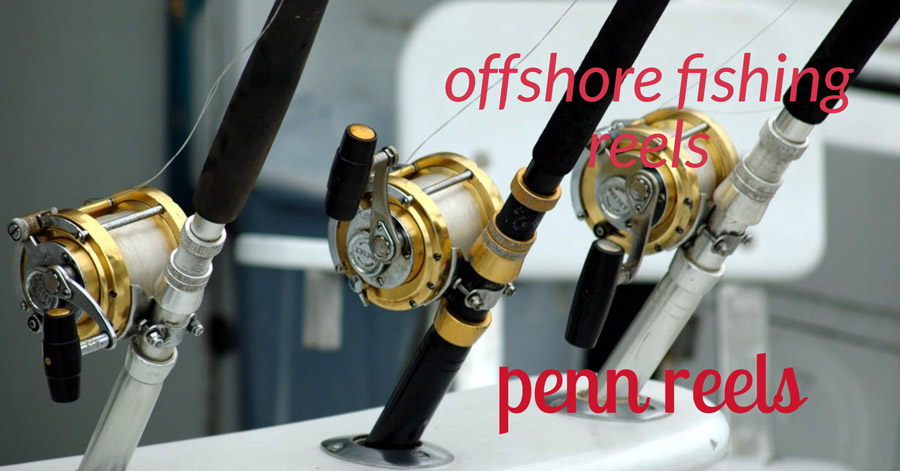
Offshore fishing is an exciting and challenging activity that requires skill, patience, and the right equipment. One of the most critical pieces of equipment for offshore fishing is the fishing reel. To maximize your offshore fishing experience, this article provides a detailed review of tips and tricks for using offshore fishing reels, including casting techniques and accuracy, fighting and landing big fish, line management and knots, adjusting the drag and other settings, and tackle selection and setup.
Casting Techniques and Accuracy
Casting is a critical skill in offshore fishing that requires proper technique and accuracy. To cast effectively, it is essential to hold the rod correctly and maintain a firm grip on the reel. The casting motion should be smooth and fluid, with the rod tip pointed upwards during the backswing and downwards during the forward swing.
It is also essential to practice casting accuracy by aiming at a specific target and adjusting the casting distance and angle as necessary. Offshore fishing reels often have adjustable spool tension and brakes that can help fine-tune the casting distance and accuracy.
Fighting and Landing Big Fish
Offshore fishing reels are designed to handle large and powerful fish species that require skill and patience to land successfully. When fighting a big fish, it is essential to maintain a steady and consistent drag to prevent the fish from breaking the line or pulling the rod out of your hand.
It is also crucial to keep the rod tip up and maintain tension on the line throughout the fight to tire out the fish gradually. Once the fish is tired, it can be reeled in slowly and landed safely.
Line Management and Knots
Proper line management and knot tying are crucial for offshore fishing reels. The fishing line should be spooled correctly and not twisted or tangled, as this can affect casting distance and accuracy. It is also essential to use the right knots to ensure that the line is tied securely to the reel and other terminal tackle.
Some common knots used in offshore fishing include the Palomar knot, the Uni knot, and the Improved Clinch knot. It is important to practice knot tying before heading out on a fishing trip to ensure that you can tie knots quickly and securely.
Adjusting the Drag and Other Settings
Offshore fishing reels often have adjustable drag systems that allow anglers to fine-tune the reel’s drag according to the fish species being targeted. It is essential to adjust the drag correctly to prevent the fish from breaking the line or the rod.
Other settings that may be adjustable on offshore fishing reels include spool tension, brake settings, and gear ratios. It is important to familiarize yourself with these settings and adjust them according to the fishing conditions and the species being targeted.
Tackle Selection and Setup
Selecting the right tackle and setting it up correctly is crucial for offshore fishing success. The fishing rod and reel should be matched to the fish species being targeted and the fishing conditions. The fishing line should also be selected based on the fishing conditions and the size of the fish being targeted.
🔶 Offshore fishing rigs may include terminal tackle such as hooks, sinkers, and swivels. It is important to select the right size and type of terminal tackle to match the fish species being targeted and the fishing conditions.
How to Choose – Our Tips and Recommendations
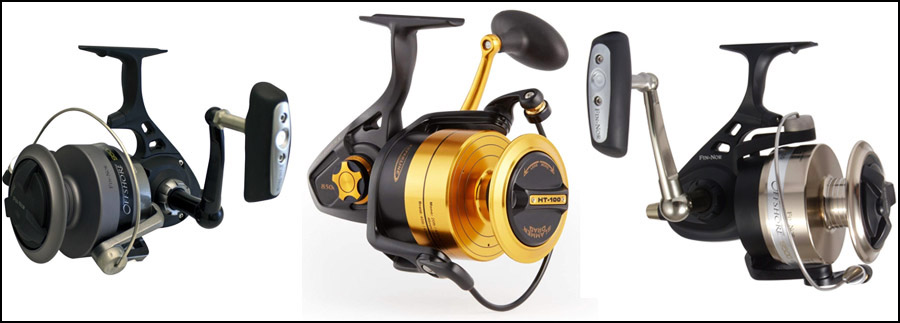
We have selected for you a few tips and features of the reels, which you need to pay attention to when buying. By sticking to them, you can choose for themselves a high-quality and durable reel.
Price. Offshore reels will not last long in seawater – they are destroyed by corrosion and exposure to water. Do not think that you will put quality materials for $ 10. It is better to pay extra and take a good reel than to change the cheap ones every few times a year. It is not necessary to take the most expensive, look for something in the middle price segment.
Braid support. If you use only mono, then make sure that the reel is braided friendly. Not all reels support it, and some even work disgusting. The rollers at the ends of the reel may have gaps, due to which the thin braid may become tangled and slid. In addition to the instructions and recommendations of the manufacturer, try to read blogs, articles about reels, and video reviews.
Capacity. Before buying, check the capacity of the reel and make sure that the reel you like can accommodate the number of lines of the size you intend to use. This is especially true of narrow reels, where the line ends very quickly in deep areas.
Lightness. Offshore fishing can be very tiring for you if the reel is very heavy. Use reels that do not heavily load your hands. Remember that graphite frames are lighter than aluminum, but they are less resistant to corrosion. Even a couple of ounces are felt like a few pounds if you fish for several hours in a row.
Drag. You do not need the maximum drag, which is written on the reel. A reel with 50 or more pounds of drag will not give you results if you are not an Atlas. On average, an adult can handle 15-20 pounds of drag, this is normal. Only the largest fish load reel more than 25 pounds.
Durability. No reel you gain will serve you forever. Sooner or later, the components lose their properties under the action of saltwater and wear. Buying less expensive reels, thinking that it will still fail after 1-2 seasons, you will lose the characteristics. Quality reels will last a very long time if properly care for them.
Corrosion protection. Manufacturers protect their reels from corrosion in different ways. Someone makes protective coatings, someone better seals them, someone makes internal gaskets or a sealed bearing, but some do not protect the reel from corrosion. These should be avoided. In any case, carefully study the information about the reel and its specification.
Bait variability. Lightweight, durable and high-quality reels will be more convenient to use small light baits or small live baits.
Ball bearings. Ball bearings – the most vulnerable place in the reel. They often get salt, dust, dirt. They are more often exposed to cold. Therefore, in order not to change the bearings several times during the season, choose a reel where they are well protected.
Handle. Ergonomics handles are very important in the reel, but for some reason, many manufacturers forget about it. You should feel the reel in your hands well. Large knobs give more control, they allow you to control the fish, even in cases where the hand or grip is covered with mucus or dirt.
🎣 Battle of the Brands: Spotlight on the Titans of Offshore Reel Manufacturing 🌊
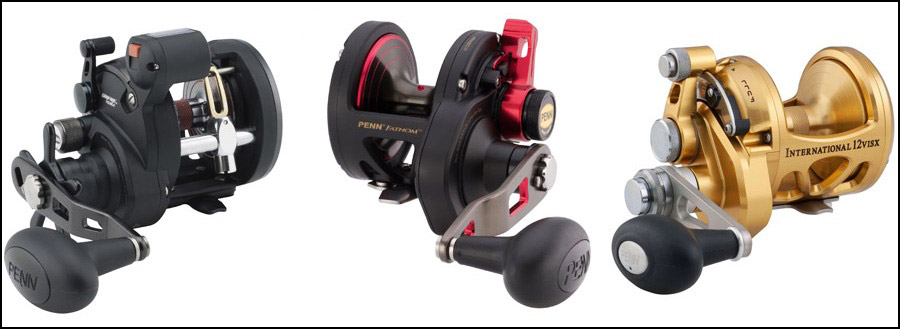
In the world of offshore angling, where the stakes are high and the battles intense, the brand of reel you choose becomes more than a mere decision—it’s a commitment to quality, performance, and trust. As the market teems with options, a few brands consistently rise to the top, solidifying their status as the preferred choice for seasoned anglers. Here’s a closer look at these giants in the industry:
Penn Fishing
Origins: Established in 1932, Penn has consistently been at the forefront of reel engineering and design.
Unique Selling Point: Penn’s battle-tested HT-100 drag system stands out. Crafted from carbon fiber, it promises both smoothness and durability, ensuring that anglers can confidently tackle powerful game fish.
Shimano
Origins: With its roots in Japan, Shimano has been delivering top-tier fishing equipment since the 1970s.
Unique Selling Point: Shimano’s Hagane Body technology is a game-changer. This cold-forged process results in reels that are both lightweight and incredibly rigid, ensuring seamless power transfer during intense battles.
Daiwa
Origins: Another gem from Japan, Daiwa has been revolutionizing the fishing industry since 1958.
Unique Selling Point: Their Magsealed technology is groundbreaking. By using magnetic oil to create a seal, Daiwa reels have an edge in terms of durability and smoothness, especially in saltwater conditions.
Accurate Fishing
Origins: Born out of a passion for offshore angling, Accurate Fishing is a brand that specializes exclusively in game fishing equipment.
Unique Selling Point: The TwinDrag system is Accurate’s claim to fame. By distributing drag pressure on both sides of the spool, this technology offers enhanced reel balance and exceptional fish-fighting power.
Okuma Fishing
Origins: Founded in 1986, Okuma is a brand that prioritizes innovation and quality in every product.
Unique Selling Point: Okuma’s C-40X carbon fiber technology deserves special mention. By weaving carbon fibers at a 45-degree angle, Okuma reels gain enhanced torsion and flex resistance, promising longevity and top-notch performance.
🔶 But remember, the best reel is one that resonates with your personal fishing style and requirements. So, do your research, trust these industry giants, and let your offshore adventures begin! 🌊🎣🏆
🎣 Choosing the Right Reel for Your Target Species 🌊
Fishing is more than just casting a line; it’s a strategic game of understanding, patience, and precision. The heart of this game? Your equipment. Much like how a golfer selects the right club based on the shot, an angler must pick the appropriate reel based on the target species. Let’s dive deeper into tailoring your reel selection for three main categories of fish:
Deep Droppers: Conquerors of the Abyss 🐟🌌
For those who yearn to explore the ocean’s depths, targeting species that lurk in the abyss, the reel choice becomes pivotal. These fish are not just deep; they’re powerful and can be quite elusive.
- Large Capacity Reels: Since you’re dealing with significant depths, you’ll need a reel that can accommodate a lot of line.
- Electric Reels: To assist in the repetitive task of dropping baits deep and retrieving them, electric reels can be a game-changer.
Speedsters: Racing the Rockets of the Sea 🚀🐟
Fast, agile, and known for their breathtaking sprints, pelagic fish like tuna and mahi-mahi are a thrilling chase. The adrenaline rush is unmatched, but so is the challenge.
- High Gear Ratio Reels: Quick line retrieval is crucial when dealing with fish known for their speed.
- Strong Drag Systems: These fish will test your gear’s limits with their explosive runs, so a robust and smooth drag is essential.
Surface Stalkers: Masters of the Upper Realms 🌊🐟
Not all game fish delve deep. Some prefer the sunlit zones, lurking just below the surface, waiting for the perfect moment to strike.
- Medium-Size Reels: These offer a balanced line capacity suited for surface action.
- Adjustable Drag Systems: Surface stalkers often display a mix of speed and power, so a versatile drag system can be advantageous.
🔶 By understanding the habits and habitats of your target species, and matching them with the right reel, you’re not just equipping yourself for success; you’re respecting the art and science of fishing. So, gear up, stay informed, and let the oceans be your playground! 🌊🎣🏆
Maintaining Your Offshore Fishing Reel
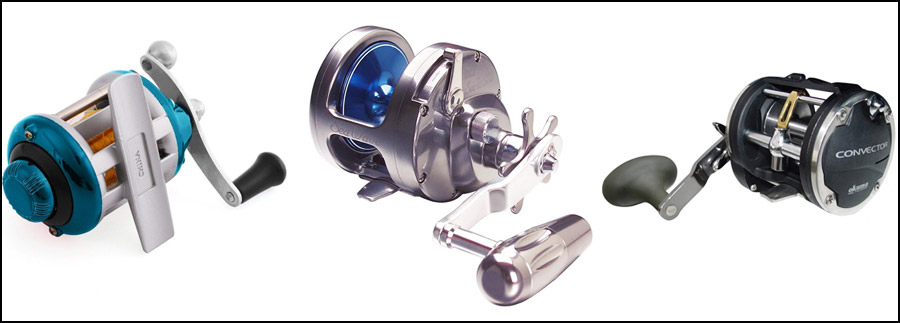
Fishing reels are essential tools for anglers who love offshore fishing. Like any other fishing gear, offshore fishing reels require proper maintenance and care to ensure they function optimally and last long.
Cleaning and Lubrication. Cleaning and lubrication are essential to ensure that offshore fishing reels function smoothly and effectively. Before cleaning the reel, it is essential to remove the fishing line and any visible dirt or debris using a soft brush or cloth. The reel should then be submerged in warm water mixed with mild soap and gently agitated to remove any dirt or salt buildup. Once cleaned, the reel should be rinsed thoroughly with clean water and dried with a soft cloth.
After cleaning, the reel should be lubricated with a suitable lubricant to ensure that all moving parts are adequately lubricated. It is essential to use the right lubricant as some may damage the reel’s parts or attract dirt and debris. High-quality reel oil or grease should be applied sparingly to the moving parts such as gears, bearings, and the spool shaft.
Inspection and Repair. Regular inspection of offshore fishing reels is crucial to identify any signs of wear and tear or damage that may compromise their performance. It is essential to inspect the reel after each fishing trip and before use to ensure that it is in good condition. The inspection should include checking the reel’s drag system, spool, handle, and bail for any signs of damage or wear.
If any issues are identified, it is essential to repair or replace the damaged parts promptly. Delayed repairs may lead to further damage, which may require more costly repairs or the replacement of the entire reel.
Storage and Transport. Offshore fishing reels should be stored and transported carefully to prevent damage. Before storage, the reel should be cleaned and lubricated, and the fishing line removed. The reel should be stored in a dry and cool place away from direct sunlight to prevent damage to the reel’s internal components.
During transport, the reel should be secured in a protective case or bag to prevent damage from impacts or scratches. It is also essential to ensure that the reel is not exposed to extreme temperatures, which may affect its performance.
Common Problems and Solutions. Offshore fishing reels may encounter several common problems that affect their performance. These problems may include drag system issues, line twists, gear problems, and spool malfunctions. To solve these issues, it is essential to identify the problem’s root cause and take appropriate corrective measures.
🔶 For example, drag system issues may be due to dirt or debris buildup or inadequate lubrication. In such a case, the reel should be cleaned and lubricated adequately. Line twists may be caused by improper spooling or casting techniques. To solve this problem, the line should be re-spooled correctly or the casting technique adjusted.
🎣 Pitfalls to Dodge with Your Offshore Reel 🚫
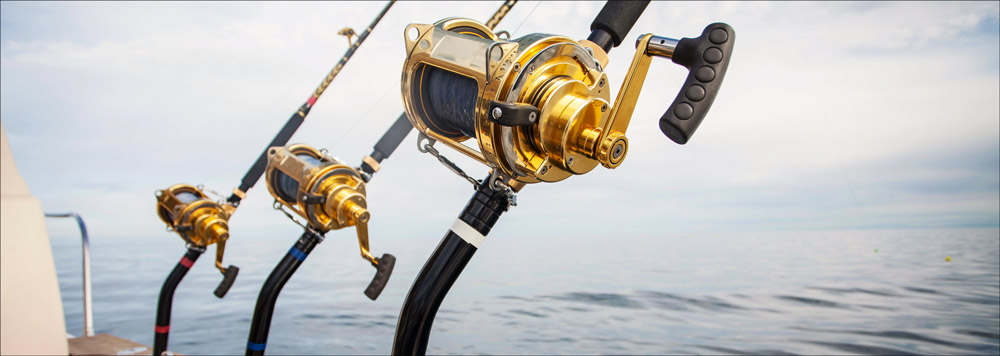
Understanding and avoiding common mistakes associated with offshore reels is crucial. Let’s navigate through some of these common pitfalls:
Overloading the Reel: Beware the Breaking Point! 🎣🔥
The allure of packing as much line onto your reel as possible can be tempting, especially when gearing up for deep-sea adventures. But remember, there’s a fine line (pun intended) between being well-prepared and overdoing it.
- Why it’s a Problem: Overloading puts undue pressure on the reel’s spool, increasing the chances of line tangles, reduced casting distance, and even potential spool warping.
- Solution: Always adhere to the reel’s line capacity specifications. If you need more line, consider opting for a larger reel or using thinner, high-strength braided lines.
Neglecting the Drag: A Silent Saboteur 🎣🛠️
The drag system is your reel’s defense mechanism against powerful fish runs. However, failing to check and adjust it regularly can lead to missed catches or even equipment damage.
- Why it’s a Problem: A drag set too tight risks breaking the line or rod under sudden pressure. Conversely, a too-loose drag can allow fish to take out excessive line, leading to potential spooling or the fish escaping with your bait.
- Solution: Before each outing, ensure your drag is set appropriately for the targeted species. Regularly test the drag during your trip, making adjustments as needed.
Overlooking Wear & Tear: The Small Signs with Big Consequences 🎣🔍
Your offshore reel is a piece of precision engineering, and like all machinery, it’s prone to wear and damage over time, especially in the challenging saltwater environment.
- Why it’s a Problem: Ignoring minor issues can lead to bigger, more costly problems down the line, from reduced reel performance to total equipment failure.
- Solution: After every trip, give your reel a thorough inspection. Clean off any salt residue, check for signs of corrosion, and ensure all parts are functioning smoothly. Regular maintenance prolongs reel life and ensures peak performance.
🎣 Wrapping it Up: The Reel Deal on Successful Offshore Angling 🌊
As we’ve journeyed through the intricate world of offshore fishing, one truth stands resolute: your reel isn’t just a tool—it’s the heart of the experience. Whether you’re venturing into the vast depths, chasing swift pelagics, or battling the behemoths of the blue, the reel is where all these adventures converge.
🔑 The Power of the Right Choice
Choosing the correct reel can be likened to selecting the right dance partner. With the perfect fit, you move in harmony, responding to each twist, turn, and tug. It amplifies your skill, refines your technique, and most importantly, transforms challenges into cherished memories.
💡 Investing Beyond the Purchase
But the journey doesn’t end once you’ve found ‘the one’. Like any prized possession, a reel deserves care, attention, and sometimes, a little pampering. A well-maintained reel doesn’t just perform better—it lasts longer, ensuring that your investment pays dividends in unforgettable experiences.
🔶 Prioritize quality, champion maintenance, and never underestimate the profound difference the right reel can make. 🏆🌊
📚 Resources & Further Reading: Dive Deeper into the World of Offshore Reels 🌊
The ocean of knowledge on offshore angling is vast and deep, just like the waters we love to explore. For those who have a burning desire to delve even further, here’s a curated list of resources that can guide, inform, and inspire:
📖 Books to Anchor Your Knowledge
“Reel Deep” by Martin Fisher: An insightful journey into the mechanics, history, and art of offshore reels.
“Ocean’s Call: Advanced Offshore Angling Techniques” by Lila Rodriguez: A treasure trove of tips, tricks, and tales from one of the best in the business.
“Saltwater Survival: Gear Maintenance and More” by Sam Turner: This is your handbook on prolonging the life of your offshore gear, with a special focus on reels.
💻 Websites for Wave-Makers
ReelReviews.com: Comprehensive reviews, how-to guides, and a vibrant community of passionate anglers.
DeepBlueAnglingForum.net: A bustling online community where anglers, both rookies, and veterans, share stories, advice, and reel recommendations.
SaltGearAcademy.org: A platform offering online courses, tutorials, and seminars focused on saltwater fishing gear, especially reels.
🏫 Courses to Cast a Wider Net
“Reel Mastery: From Basics to Advanced” offered by Marine Angling Institute: A structured course taking you through the A-Z of offshore reels.
“Saltwater Gear Maintenance Workshop” at Oceanic Fishing School: A hands-on workshop where you learn to service and maintain your equipment.
🛍️ Where to Buy or Test Offshore Reels
ReelDeal Shop: With branches across the coast, they offer a vast selection and even have a ‘try before you buy’ section.
OceanGear Emporium: Renowned for their customer service, they stock the latest models and often host reel testing events.
Angler’s Paradise Online: For those who prefer digital shopping, this website provides detailed product videos and user reviews.
Tags: #best offshore fishing reel / #best reel for offshore fishing / #best offshore fishing rod and reel combo / #how to find best reel for offshore fishing / #worlds best offshore fishing reel

I live in Tenerife (Canary Islands) for the last 10+ years and share my daily fishing experiences on my website. Many years of personal experience as a fisherman and the vast experience of my friends allow me to write professionally on any fishing topics (from choosing a flashlight and equipment to deep-sea fishing).
All of my advice is based on practical real-world experience and will be useful to both novice anglers and professionals. Read more about the author.
Affiliate Disclosure: FishReeler.org sometimes gets paid for listings, through sponsors or affiliate programs like Amazon, Ebay, Cabelas, Bass Pro Shop, Shimano, Daiwa, Rapala, Renn, Okuma, KastKing, etс. Clicking a link helps keep FishReeler.org free, at no extra cost to you!
About the author: Each article is verified by the fishing expert Sergio Smirnoff. The articles are written by professional and amateur fishermen with 20+ years of fishing experience.
Note: The views and opinions expressed in this article are those of the authors and do not necessarily reflect the official policy or position of any agency. The articles are for informational purposes only, share your opinions in the comments and join the fishing discussions, let's share our fishing experiences together!

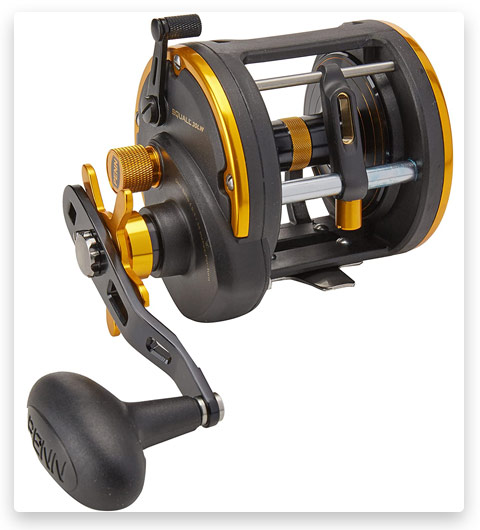
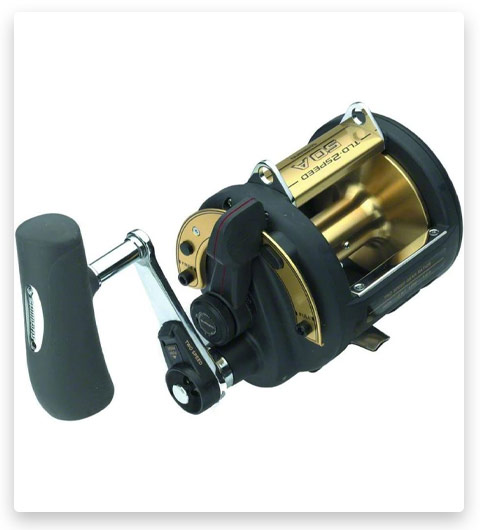
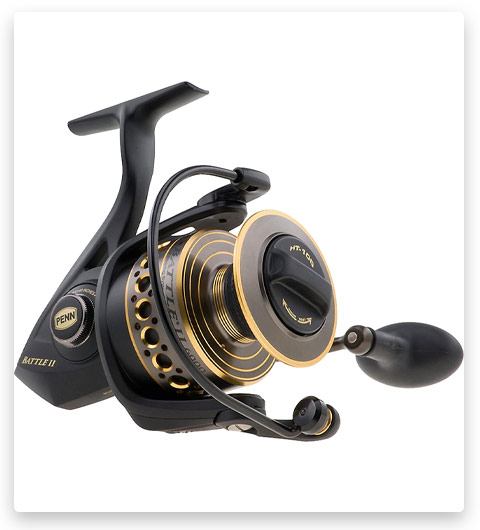
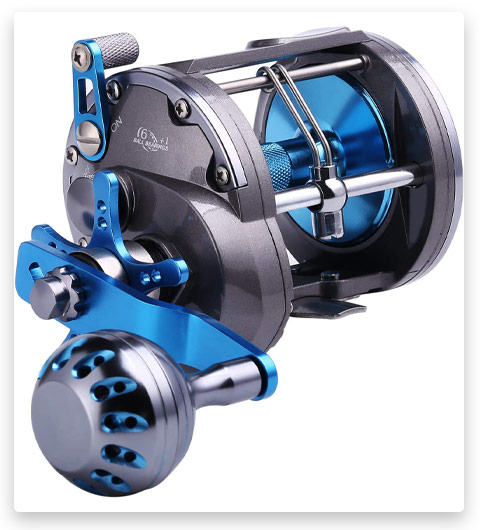
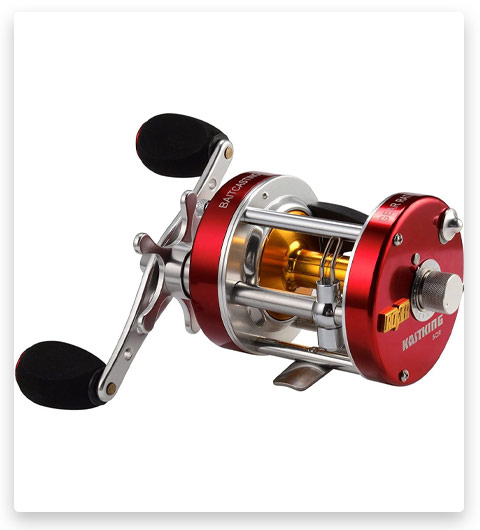
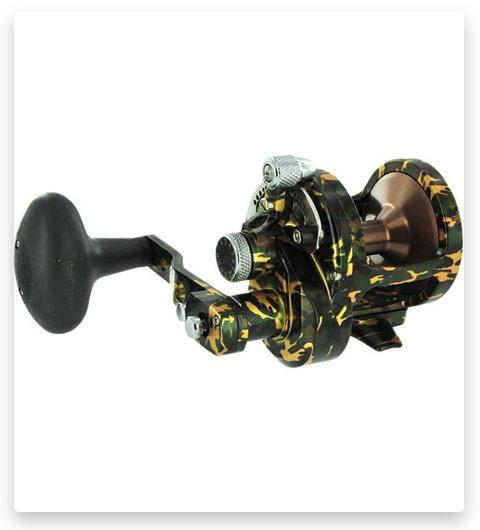

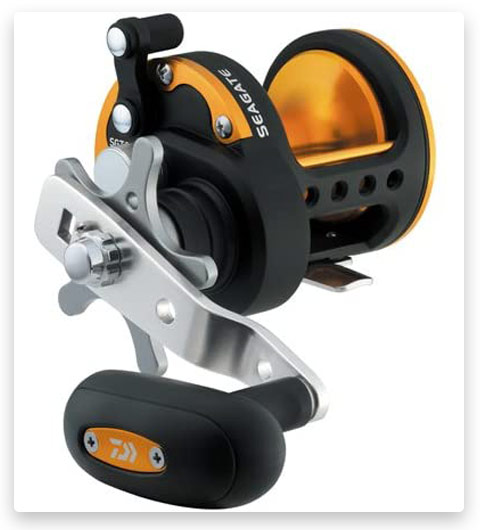
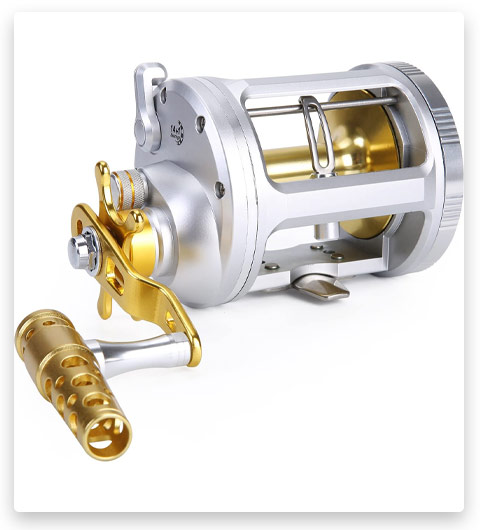
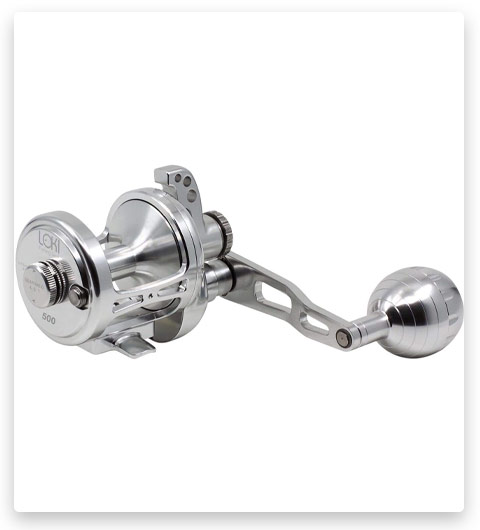
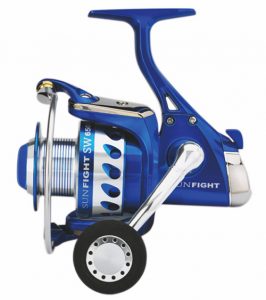
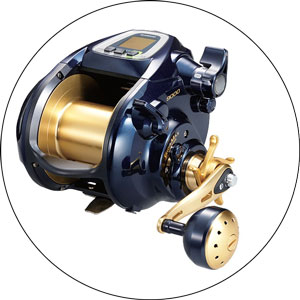

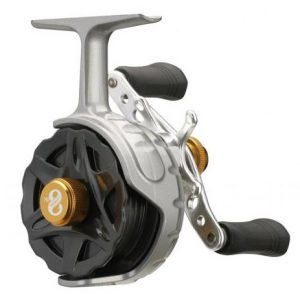
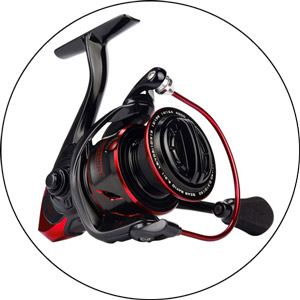
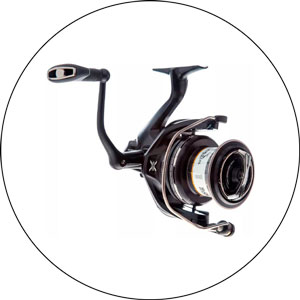
I read your review carefully. It reminds me a little of Wikipedia. Few friendly texts, everything in the book is precise and rigorous. The information is easy to grasp. The choice of offshore fishing reel is not in doubt. Respected examples of this genre of fishing are presented in the table. Lots of explanations and answer questions that help you understand more deeply what it is and why. I will buy on your recommendation, I will definitely write later.
Of your options, I’ve had the Okuma Cold Water Linecounter Trolling Reel for about 7 years. I go fishing every Saturday in all kinds of weather. On my first fishing trip, I found this reel heavy and uncomfortable. My arms were getting tired. When I caught my first perch and pulled out smoothly and easily, I loved it immediately. The rest of the article is written truthfully and quite fully. I see you’ve been on this topic for a long time and are framing it in the same style. Thank you for your work for us!
It’s such a shame to hear about the Penns. I actually have the chance to get some wholesale along with the others listed.
When it comes to trolling, my crew and I usually use a maximum of 5 conventional reels and one spinning reel – a 6000 Penn Battle on a surf pole – to keep it far and clear. We prefer using the Penn because of its ultra-soft drag setting, which works well for those finicky fish.
Last year, during one of our fishing trips, we were pulling in the spread when I got on the way back and reeled into about 30 feet from a boat. Suddenly, a Kingfish and I saw each other at the same time. It was holding the bait and didn’t realize it was on the line because of the ultra-soft drug release. It was one of the best Kingfish fights I’ve had because it was fresh on those first runs from the boat. The fish ended up weighing 38 lbs!
Overall, I highly recommend using the Penn Battle reel, especially for those who enjoy trolling. It’s definitely worth investing in quality gear to make the most out of your fishing experience.
I would highly recommend using the Avet 50W or Shimano’s Tiagra if you’re planning on high-speed trolling or fighting a decent-sized tuna. These reels have held up much better than our Penn reels and come with better warranties.
While we do have a bunch of old Penn reels, the new ones haven’t held up as well. In my opinion, it’s better to stick to conventional reels for trolling, as spinning reels may not hold up well if a giant fish grabs your line and rips out half of it in less than 10 seconds.
I would highly recommend going with the Saragosa reel, as it is more refined and better engineered compared to the other options.
While there’s nothing inherently wrong with the Slammer reel, I’m not a fan of the fact that the pinion gear sits directly on the frame, which is guaranteed to wear into the frame eventually and is not repairable.
The BG reel is smooth and decent, but it’s not in the same league as the other two. There are no seals other than the drag stack, and it only has a top drag stack instead of a dual top and bottom. During long fights, the other two reels’ drags will remain smoother with a higher drag output for a longer fight.
Overall, it’s important to carefully consider and research different reel options before making a purchase.
Shimano is the best quality brand, but I have to admit that I’m a bit biased as a Shimano fanboy! I’ve owned both Shimano and Penn reels, but I haven’t tried out any Daiwa reels yet.
From my experience, Penn reels can take the most abuse, but they’re not as smooth or light as Shimano reels. In contrast, Shimano reels are very durable, and I’ve never had any issues with them.
That being said, I have had some issues with a couple of Battle II reels in the past. They started making a grinding noise when reeling, even though I’m very careful about cleaning and maintaining my gear. It’s possible that I just got unlucky and picked up a couple of bad ones.
Ultimately, it’s important to do your own research and consider your personal preferences and needs when choosing a reel brand. Everyone has different experiences and opinions, so it’s best to find what works best for you.
I completely agree with the previous commenter regarding Shimano reels. Whenever I’m in the market for an affordable spinning reel, I always opt for the Shimano Sonora. It’s incredibly durable and the drag remains smooth, even after taking a beating.
Living here in Hawaii, our saltwater is particularly harsh, and our inshore fish are notoriously strong. However, even the cheaper Shimano reels handle these conditions with grace.
In fact, I recently purchased a Shimano 4000 for around $20, and I’m really impressed with how well it works. The only issue I’ve noticed is that the line seems to be loose around the reel, even though I haven’t added many lines to it. Nonetheless, overall, it’s a great reel for the price.